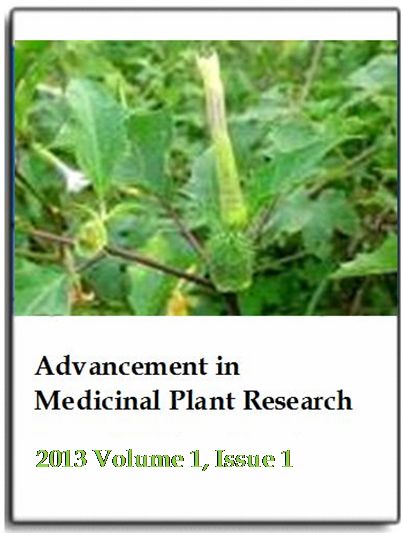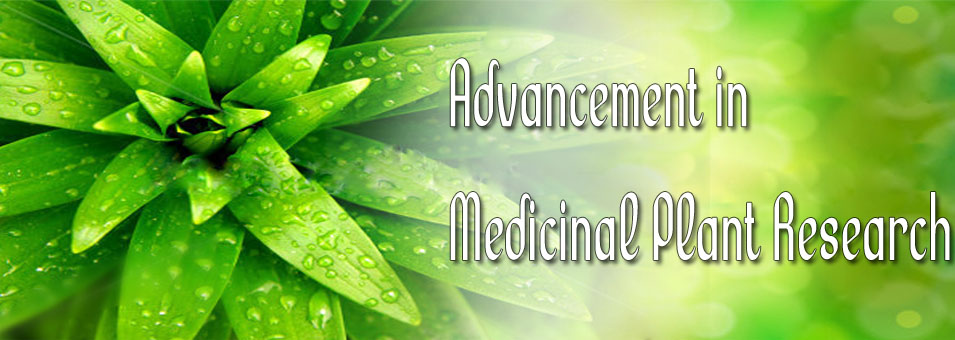Phytochemical analysis and in vitro antibacterial activity of root peel extract of Raphanus sativus L. var niger
Safia Janjua, Maliha Shahid and Fakhir-i-AbbasAdvancement in Medicinal Plant Research
Published: January 14 2013
Volume 1, Issue 1
Pages 1-7
Abstract
The extracts of peels of edible root of Raphanus sativus L. var niger were analyzed for phytochemicals and in vitro antibacterial activity. The proximate analysis and phytochemical analysis revealed that peels of R. sativus L. var niger had most of the important phytoconstituents like tannins, saponins, flavonoids, phlobatannins, anthraquinones, carbohydrates, reducing sugars, steroids, phytosterol, alkaloids, amino acids, terpenoids, cardiac glycosides and chalcones; indicating its potential for medicinal use. Agar well diffusion assay was employed to test the antibacterial activity of extracts, prepared by using different solvents, against gram positive Staphylococcus aureus ATCC 12598, Bacillus subtilis-QAU and Micrococcus luteus ATCC 10240 and gram negative bacteria Escherichia coli-ATCC 8739, Salmonella typhi-ATCC 14079, Klebsiella pneumonia-QAU, Pseudomonas aeruginosa ATCC 7700, Bordetella bronchiseptica ATCC 4617 and Enterobacter aerogenes-QAU. Effectiveness of the extracts (CAE, CEE, CME, CEAE and CPEE) against different bacterial strains was measured in terms of zone of inhibition in millimeters. Minimum inhibitory concentration (MIC) and minimum bactericidal concentration (MBC) values determined were compared with the positive control (Gentamycin) used. The present study is supportive evidence that peels of R. sativus, generally wasted, have important medicinal constituents.
Keywords: Raphanus sativus L. var niger, antibacterial activity, minimum inhibitory concentration, minimum bactericidal concentration.
Full Text PDF
